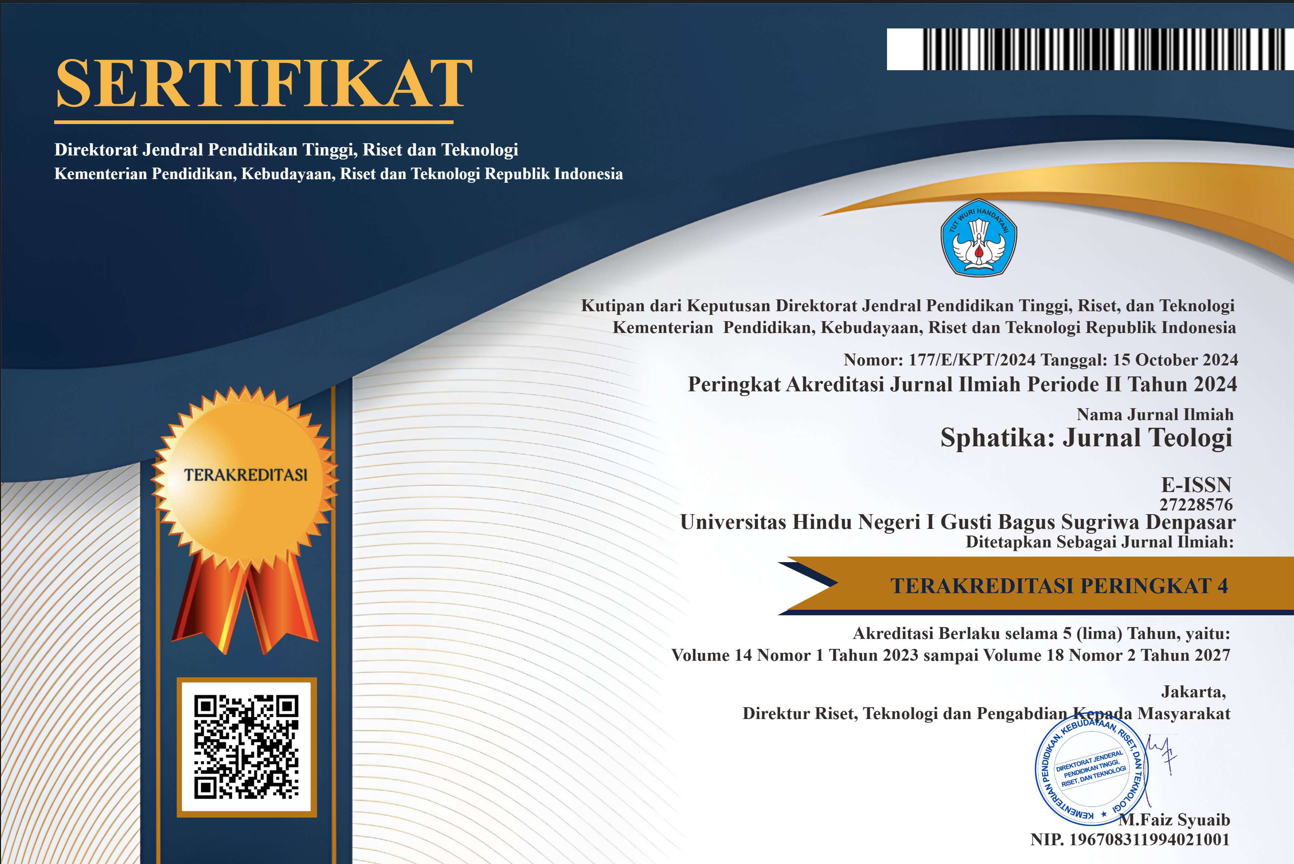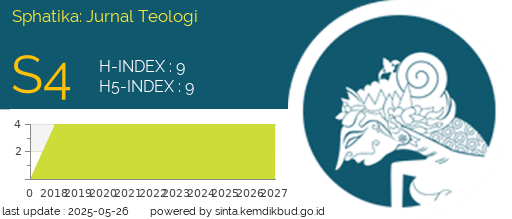Mitos Basma Rah di Desa Adat Taman Pohmanis
Kajian Strukutur, Fungsi, dan Nilai
DOI:
https://doi.org/10.25078/sphatika.v15i1.3539Keywords:
function; myth; structure; value.Abstract
This research on the "Basma Rah Myth in the Taman Pohmanis Traditional Village: Study of Structure, Function and Value" aims to describe the structure contained in the Basma Rah Myth, analyze the functions contained therein, and analyze the Basma Rah Myth in terms of literary value. The theory used in this research is structural theory which is Nurgiantoro's opinion. Function theory which is a combination of the opinions of Wallek and Warren, William R. Bascom, and Sibarani, and the value theory according to Atmaja.
The methods and techniques used are divided into three stages, namely (1) the stage of providing data using the listening method with observation and interview techniques, recording techniques and note-taking techniques, as well as the proficient method with basic fishing techniques and advanced proficient techniques, (2) the data analysis phase using qualitative methods assisted by analytical descriptive techniques, (3) the data analysis results stage uses informal methods supported by deductive techniques.
The structure that builds in this research is a narrative structure. The incident began with I Gede Macaling issuing a bisama or promise to look for prey. The groove used is a straight groove. The main character in the Basma Rah Myth is I Gede Macaling. The setting used is generally a place in the residential area. The legend of Bukit Putung has a magical and religious theme, and has a mandate not to say words that will cause other people to suffer disaster.
The aesthetic function contained in the Basma Rah Myth is the result of interviews with legends using Balinese, which is the mother tongue of the Balinese people. The pragmatic function of the Basma Rah Myth is as a source of knowledge and confirmation of one's superiority. The ethical function of the Basma Rah Myth is related to the ethics and norms that apply and are applied to community life. The historical function of the Basma Rah Myth is as an antidote to the danger issued by I Gede Macaling when he visited the village. The position of the Basma Rah Myth in literary value is as a form of gratitude and respect for the ancestors who have protected them. Caru and butuan pigs are used in ceremonies aimed at bringing bhuta kala and dengen to life.
References
Dewi, Ni Luh Putu Kartika Sari. 2020. Analisis Struktur dan Nilai Mitos Sang Naga Rarik di Pura Luhur Mekori. Bali, Jurnal Humanis Fakultas Ilmu Budaya Unud.
Esten, Mursal.1984. Kritik Sastra Indonesia. Padang: Angkasa Raya.
Ranem, I Nyoman. 2022. Eksistensi Mitos Cuntaka Wuku Watugunung Desa Taro, Kecamatan Tegalalang, Kabupaten Gianyar, Bali. Volume 5 Nomor 2 Tahun 2022.















